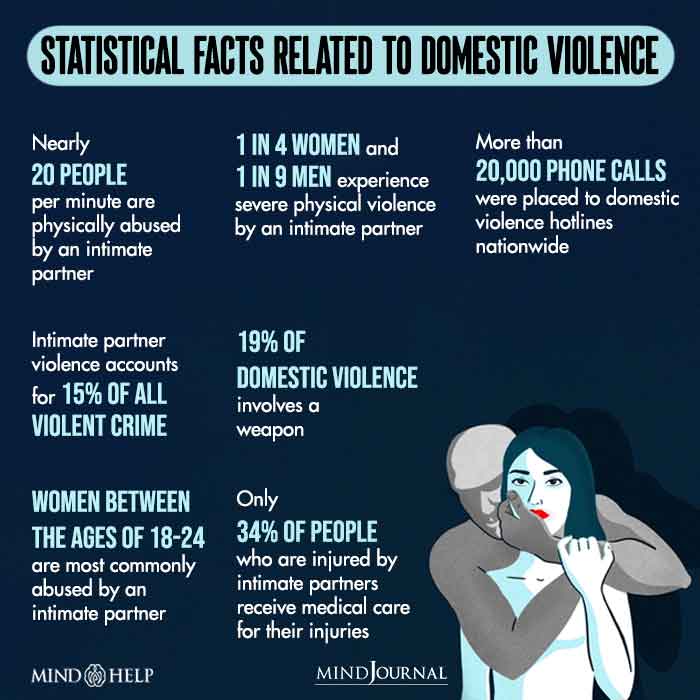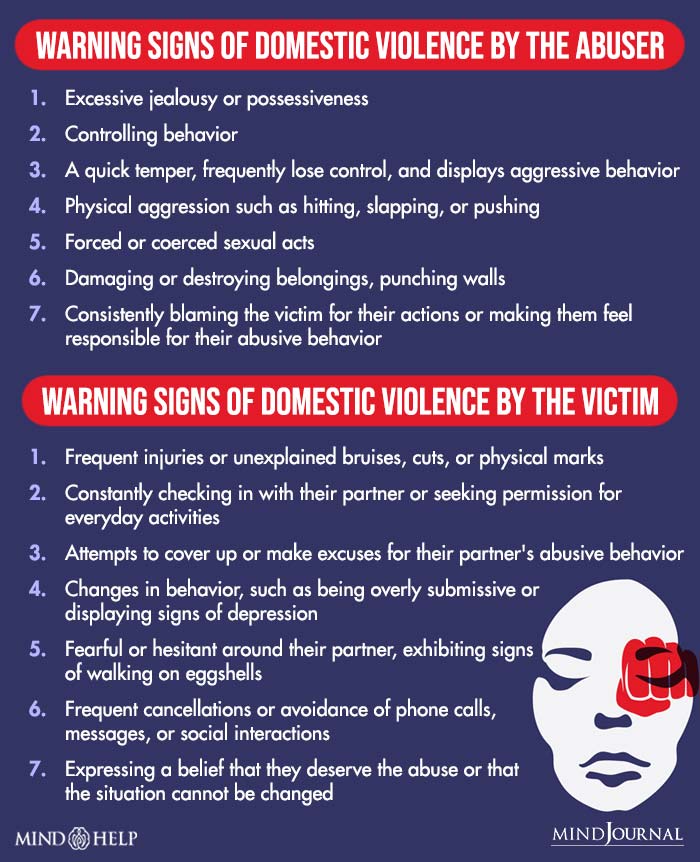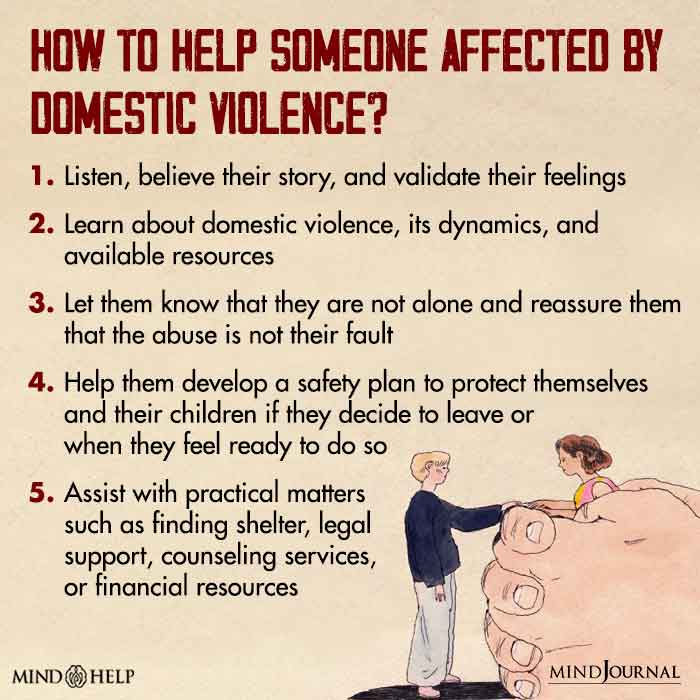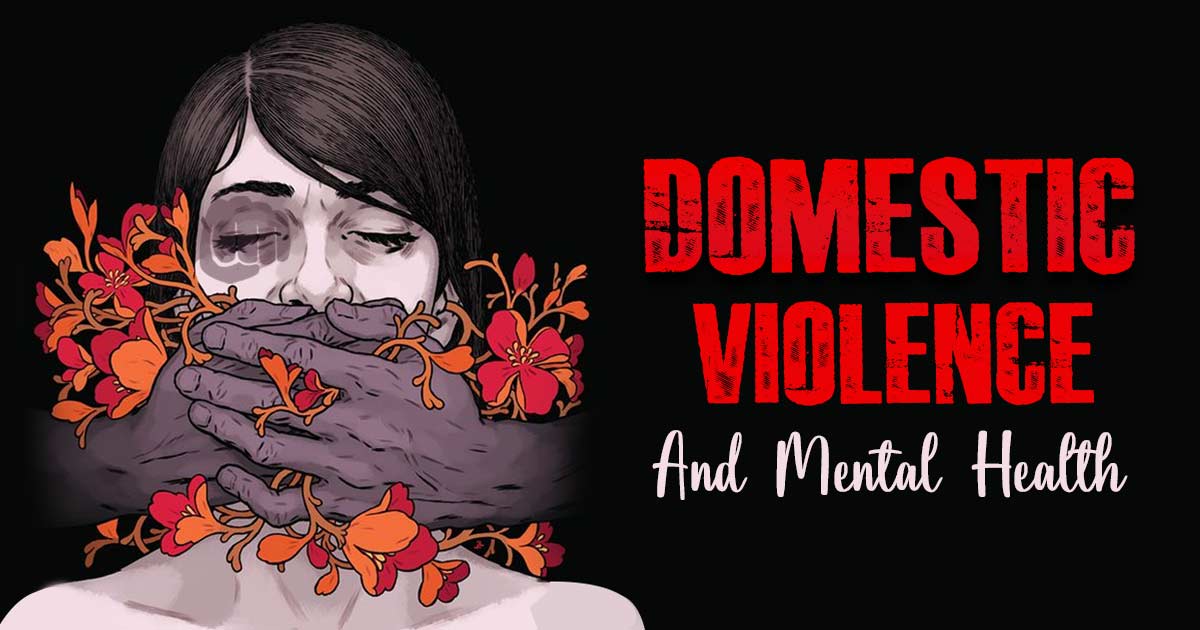Domestic violence and mental health bring to light the damaging consequences of abusive relationships on an individual’s psychological well-being. It underscores the critical importance of providing comprehensive support and resources to address the multifaceted challenges experienced by survivors.
What is Domestic violence?
Domestic violence encompasses a pattern of 1 Huecker, M. R., King, K. C., Jordan, G. A., & Smock, W. (2022). Domestic Violence. In StatPearls. StatPearls Publishing. Available from: https://www.ncbi.nlm.nih.gov/books/NBK499891/ abusive behavior, where one person seeks to exert power and control over another within an intimate or domestic partnership.
This can manifest through various forms of abuse, physical, sexual, emotional, psychological, or financial. The scope of domestic violence is extensive, impacting relationships between spouses, partners, parents, children, and siblings, as well as individuals residing in the same household.
Studies reveal that around 30% of women 2 Shaikh M. A. (2022). Prevalence and Correlates of Intimate Partner Violence against Women in Liberia: Findings from 2019-2020 Demographic and Health Survey. International journal of environmental research and public health, 19(6), 3519. https://doi.org/10.3390/ijerph19063519 have experienced intimate partner violence or non-partner sexual violence, underscoring the pervasive nature of this issue.
It is worth noting that more women (23%) than men (19.3%) have reported experiencing assault at least once in their lifetime. Consequently, domestic violence poses a serious and far-reaching concern that affects individuals of all genders, ages, races, socioeconomic backgrounds, and sexual orientations.


Effects of Domestic Violence on Mental Health
Domestic violence can have profound and detrimental 3 Newnham, E. A., Chen, Y., Gibbs, L., Dzidic, P. L., Guragain, B., Balsari, S., Mergelsberg, E. L. P., & Leaning, J. (2022). The Mental Health Implications of Domestic Violence During COVID-19. International journal of public health, 66, 1604240. https://doi.org/10.3389/ijph.2021.1604240 effects on daily mental health functioning, such as:
- Increased levels of stress and constant fear
- Low self-esteem and feelings of worthlessness
- Sleep disturbances, such as insomnia or nightmares
- Physical health problems, including headaches, stomachaches, or chronic pain
- Feelings of guilt or self-blame
- Difficulty concentrating or making decisions
- Suicidal thoughts or self-harming behaviors
Impact of Domestic Violence on Children
The impact of domestic violence on children is profound and can have long-lasting consequences 4 Moylan, C. A., Herrenkohl, T. I., Sousa, C., Tajima, E. A., Herrenkohl, R. C., & Russo, M. J. (2010). The Effects of Child Abuse and Exposure to Domestic Violence on Adolescent Internalizing and Externalizing Behavior Problems. Journal of family violence, 25(1), 53–63. https://doi.org/10.1007/s10896-009-9269-9 , such as:
- Behavioral problems such as aggression, withdrawal, acting out, and difficulties in school.
- Struggling with establishing and maintaining healthy relationships.
- Can disrupt a child’s normal developmental milestones, leading to delays in speech, motor skills, and cognitive abilities.
Impact of Domestic Violence on Women’s Mental Health
The impact of domestic violence on women can 5 Sharma, K. K., Vatsa, M., Kalaivani, M., & Bhardwaj, D. (2019). Mental health effects of domestic violence against women in Delhi: A community-based study. Journal of family medicine and primary care, 8(7), 2522–2527. https://doi.org/10.4103/jfmpc.jfmpc_427_19 result:
- Isolation and withdrawal from social activities and relationships.
- Loss of interest or enjoyment in previously enjoyed activities.
- Trauma related to domestic violence can interfere with a woman’s emotional availability and ability to provide a safe and nurturing environment for her children.
Types of Domestic Violence
Domestic violence can manifest in various forms 6 Aghakhani, N., Sharif Nia, H., Moosavi, E., Eftekhari, A., Zarei, A., Bahrami, N., & Nikoonejad, A. R. (2015). Study of the Types of Domestic Violence Committed Against Women Referred to the Legal Medical Organization in Urmia – Iran. Iranian journal of psychiatry and behavioral sciences, 9(4), e2446. https://doi.org/10.17795/ijpbs-2446 . Here are some common types:
- Physical violence involves the use of force that causes bodily harm or injury, such as hitting, slapping, kicking, punching, or using weapons.
- Sexual abuse refers to any non-consensual sexual activity or coercion, including rape, unwanted sexual contact, or forced sexual acts.
- Emotional abuse aims to undermine a person’s self-worth and manipulate their emotions, such as criticism, and humiliation.
- Financial abuse involves controlling a person’s financial resources, limiting their access to money, or preventing them from working.
- Verbal abuse entails the use of demeaning or derogatory language, insults, yelling, name-calling, and constant belittlement.
What Causes Domestic Violence?
It is essential to recognize that domestic violence is a conscious choice 7 Pickard, H. (2015). Self-Harm as Violence: When Victim and Perpetrator Are One (H. Widdows & H. Marway, Eds.). PubMed; Palgrave Macmillan. Available from: https://www.ncbi.nlm.nih.gov/books/NBK349101/ , not an uncontrollable impulse. The actions of a survivor should never be seen as the cause of abusive behavior. Common risk factors 8 Jewkes R. (2002). Intimate partner violence: causes and prevention. Lancet (London, England), 359(9315), 1423–1429. https://doi.org/10.1016/S0140-6736(02)08357-5 associated with domestic violence include:
- Individuals who struggle with low self-esteem might resort to coping mechanisms that involve demeaning and degrading others.
- Individuals who have experienced abuse, whether physical or emotional, in their past are at a higher risk of perpetrating abuse themselves.
- Societies with entrenched beliefs in gender inequality (the idea of male superiority) or where aggression is normalized may contribute to domestic violence.
- The nature of dominating and controlling others can trigger psychological effects of domestic violence on a victim’s life such as social interactions, finances, and personal decisions.
- People with signs of Borderline personality disorder can increase the fear of abandonment or insecurity which may contribute to a higher likelihood of domestic violence.
Psychological Effects of Domestic Violence
Domestic violence has significant mental health 9 Wessells, M. G., & Kostelny, K. (2022). The Psychosocial Impacts of Intimate Partner Violence against Women in LMIC Contexts: Toward a Holistic Approach. International journal of environmental research and public health, 19(21), 14488. https://doi.org/10.3390/ijerph192114488 implications for survivors, contributing to a range of emotional and psychological challenges, such as:
- The emotional and psychological abuse endured in domestic violence can contribute to feelings of worthlessness and self-blame, which can lead to depression.
- Domestic violence can lead to the development of Anxiety disorders, where survivors may experience excessive worry about various aspects of life, including safety.
- Domestic violence involves fear and anticipation of harm and a state of hyperarousal which can lead to the development of posttraumatic stress disorder (PTSD).
- Alcohol or other substances may also be used to a significant extent to cope with the emotional and psychological pain caused by the abuse.
How to Identify People Affected by Domestic Violence?
Identifying and assessing the effects 10 Yaxley, R., Norris, K., & Haines, J. (2017). Psychological Assessment of Intimate Partner Violence. Psychiatry, psychology, and law : an interdisciplinary journal of the Australian and New Zealand Association of Psychiatry, Psychology and Law, 25(2), 237–256. https://doi.org/10.1080/13218719.2017.1356211 of domestic violence on mental health requires a sensitive and comprehensive approach that includes:
- Being familiar with the signs of domestic violence, such as frequent absences from work, isolation from friends and family, and unexplained injuries.
- Utilizing validated screening tools or questionnaires designed to identify domestic violence, such as composite abuse scale 11 Kelsey Hegar, A. T. and. (2013). The Community Composite Abuse Scale: Reliability and Validity of a Measure of Intimate Partner Violence in a Community Survey from the ALSWH. Journal of Women’s Health Issues & Care, 02(04). https://doi.org/10.4172/2325-9795.1000115 .
- Involving professionals trained in domestic violence, such as counselors, social workers, or law enforcement, who can provide guidance and support.
Treatment for Domestic Violence
Here are the key components 12 Karakurt, G., Koç, E., Katta, P., Jones, N., & Bolen, S. D. (2022). Treatments for Female Victims of Intimate Partner Violence: Systematic Review and Meta-Analysis. Frontiers in psychology, 13, 793021. https://doi.org/10.3389/fpsyg.2022.793021 of treatment:
1. Cognitive Behavioural Therapy (CBT)
CBT helps individuals identify and change negative thought 13 Chand, S. P., Kuckel, D. P., & Huecker, M. R. (2022). Cognitive Behavior Therapy. In StatPearls. StatPearls Publishing. Available from: https://www.ncbi.nlm.nih.gov/books/NBK470241/ patterns and behaviors associated with domestic violence. It focuses on challenging distorted beliefs, developing healthy coping skills, and enhancing problem-solving abilities.
Read More About CBT Here
2. Couple Therapy
Couples therapy can be a treatment 14 Information, N. C. for B., Pike, U. S. N. L. of M. 8600 R., MD, B., & Usa, 20894. (2014). Summary of Included Couples Therapy Interventions. In www.ncbi.nlm.nih.gov. Canadian Agency for Drugs and Technologies in Health. Available from: https://www.ncbi.nlm.nih.gov/books/NBK253321/ for domestic violence when both partners are committed to change and it focuses on improving communication, addressing power imbalances, and fostering healthier relationship dynamics.
Read More About Couple Therapy Here
3. Interpersonal Therapy (IPT)
IPT concentrates on four primary areas 15 Rajhans, P., Hans, G., Kumar, V., & Chadda, R. K. (2020). Interpersonal Psychotherapy for Patients with Mental Disorders. Indian journal of psychiatry, 62(Suppl 2), S201–S212. https://doi.org/10.4103/psychiatry.IndianJPsychiatry_771_19 of interpersonal functioning: grief, role transitions, interpersonal disputes, and interpersonal deficits. The therapist collaboratively identifies which areas are most relevant to the client’s experiences related to domestic violence.
4. Group Therapy and Support Groups
Group therapy and support groups provide survivors with 16 Malhotra, A., & Baker, J. (2022). Group Therapy. In StatPearls. StatPearls Publishing. Available from: https://www.ncbi.nlm.nih.gov/books/NBK549812/ a safe and supportive environment to share experiences, gain insights, and learn from others who have gone through similar challenges. These settings offer validation, connection, and a sense of belongingness, promoting healing and empowerment.
Read More About Group Therapy Here
5. Community Resources and Referrals
Providing information about local resources, such as shelters, hotlines, counseling services, and legal aid, is essential. Referring survivors and perpetrators to specialized organizations and professionals trained in domestic violence intervention can ensure comprehensive support.

How To Cope With Domestic Violence?
Here are some strategies 17 Winfield, A., Hilton, N. Z., Poon, J., Straatman, A. L., & Jaffe, P. G. (2023). Coping Strategies in Women and Children Living with Domestic Violence: Staying Alive. Journal of family violence, 1–13. Advance online publication. https://doi.org/10.1007/s10896-022-00488-1 that may assist you to cope with domestic violence:
- Learn about the signs of domestic violence, its dynamics, and available resources to empower yourself and make informed decisions.
- Prioritize self-care activities such as exercise, relaxation techniques, and hobbies to promote physical and emotional well-being.
- Reach out to a trusted friend or family member who can provide support and guidance during this difficult time.
- Consult with a therapist or counselor experienced in trauma and domestic violence to address the emotional and psychological impact of the abuse.
- Contact a helpline or domestic violence hotline for guidance, support, and resources.
- Keep a record of abusive incidents, including dates, times, and descriptions, as evidence if legal action is needed.
- Consult with legal professionals experienced in domestic violence cases to understand legal rights, obtain protection orders, or pursue legal action against the abuser.
Takeaway
The far-reaching and devastating impact of domestic violence on mental health and overall well-being highlights the significance of providing support, intervention, and prevention measures. By recognizing the profound effect it has on daily functioning, we can prioritize efforts to break the cycle of abuse, foster healing, and promote the well-being and recovery of survivors.
At A Glance
- Domestic violence involves a pattern of abusive behaviors.
- It can occur in various forms, such as spousal abuse, partner abuse, dating violence, or child abuse within the context of the family.
- The impact of domestic violence extends beyond physical injuries, with profound effects on mental health, emotional well-being, and overall quality of life.
- Survivors of domestic violence often experience anxiety, depression, post-traumatic stress disorder (PTSD), and suicidal ideation.
- The cycle of abuse in domestic violence can be challenging to break without appropriate support and intervention.
- Support systems, such as helplines, shelters, counseling services, and legal protections, play a crucial role in assisting survivors.
- Prevention efforts, community awareness, and psychoeducation are essential to addressing domestic violence.
Frequently Asked Questions (FAQs)
1. Why do victims sometimes return to or stay with abusers?
Victims of domestic violence may return to or stay with their abusers due to fear, often resulting from threats, intimidation, or a belief that leaving would lead to even greater harm. Additionally, financial dependence can create a barrier to leaving, as the victim may lack the resources or support to establish independence and escape the abusive situation.
2. Do abusers show any potential warning signs?
Abusers may display warning signs such as possessive or controlling behavior, frequent anger or aggression, excessive jealousy, and a tendency to blame others for their actions.
3. Is it possible for abusers to change?
While change is possible, it is important to note that abusers can only change if they recognize and take full responsibility for their actions, actively seek professional engagement in long-term therapy or intervention programs, and commit to ending their abusive behaviors.











